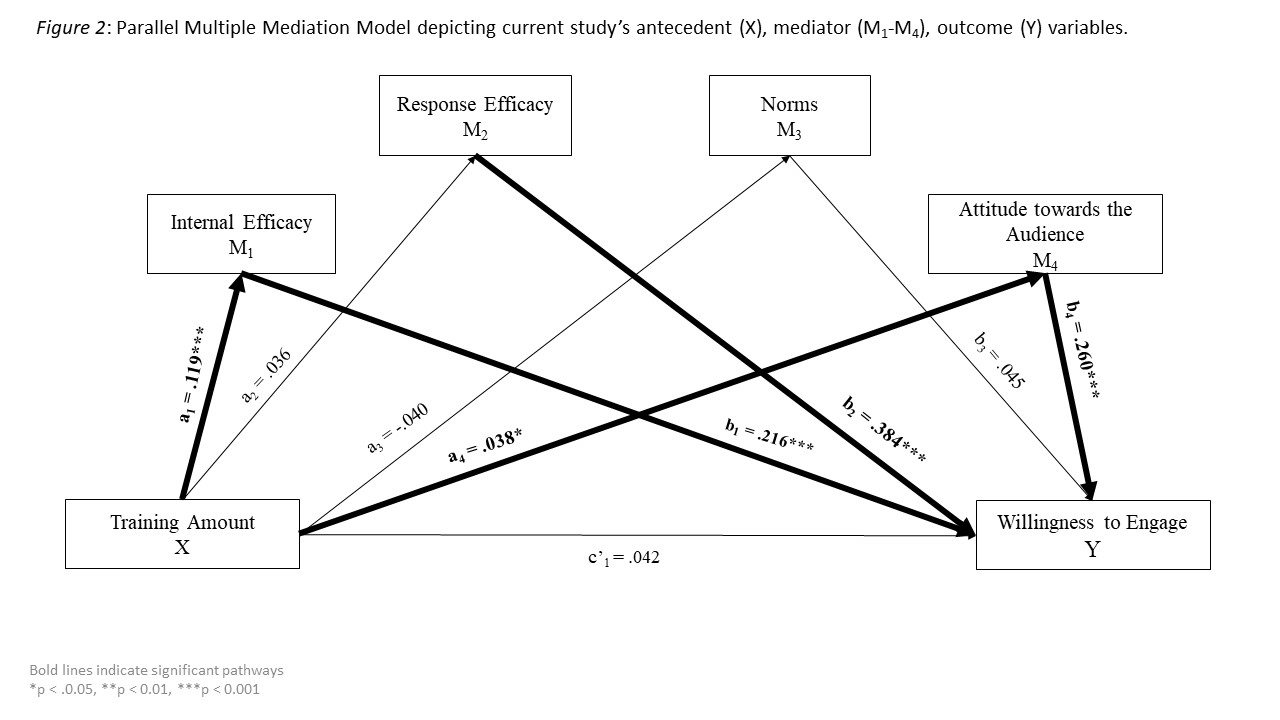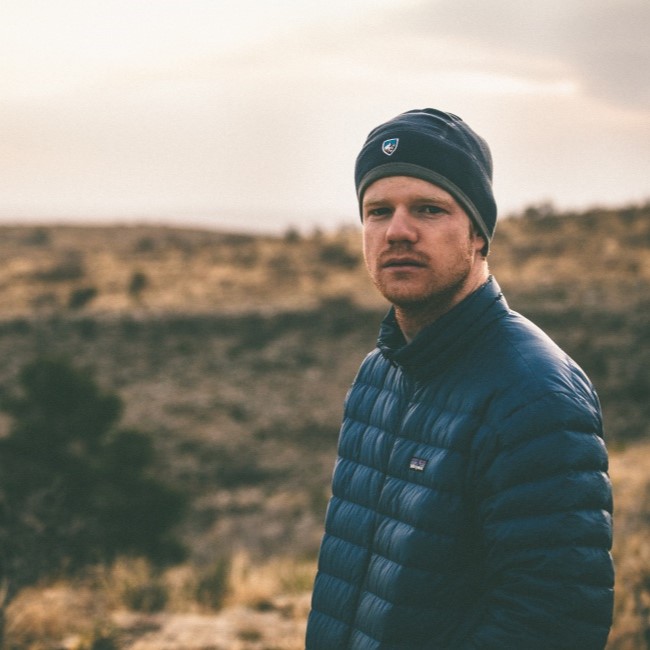Contribution of Science Communication Training on Scientist Public Engagement
This project used data collected from a national survey of scientists from the American Association for the Advancement of Science (AAAS). We asked questions about their public engagement habits, attitudes, and beliefs. My coauthors and I were specifically interested in how formal science communication training influenced their willingness to participate in future public engagement activities. These could include things like speaking at a local science cafe event, posting to social media, or other community level events to promote their research. The data was origianlly collected in 2016 and our paper was published in 2020.
Science Communication Training & Indirect Effects
There’s been a steady increase of science communication training programs run by insitutions like AAAS, The Royal Society, and The Alan Alda Center for Science Communication at Stony Brook University. They all aim to teach scientist the basics of promoting their grant funded research projects. Most of the grants awarded by the National Science Foundation include a section about public engagement. Grant winners are expected to get input from the community, indiginous groups, and local governments as a part of their funding. The more well-rounded the application (including past public engagement activities and training) the better chance you have at funding.
Training for anything is often seen as an obstacle to get past. Scientists at top tier research organizations and universities see it as a time commitment that falls to the bottom/off their to-do list. While some gravitate toward it as a specialty, it’s often an afterthought for most. Even in the communication research literature, training has little to no significant effect on a scientists willingness to engage. Previous studies outlined in the full paper used direct effects models to describe the relationship between training and willingness to engage. This study made use of an indirect model. We found an effect of training on willingness to engage through components of the Theory of Planned Behavior. A scientist’s attitudes, percieved ability, and past engagement activity mediate (or catalyze) formal science communication training’s connection to willingness to engage.
Previous research only found communication training to be a fickle control variable at best when outlining this relationship. The outcome from this examiniation is a tide that rises all boats: those boats being science communicators, training instructurs, grant funding agencies, and anyone else looking to increase their research impact.
Research Methods
The sample included a randomized collection of publicly available emails from 62 research universities from the Association of American Universities (AAU). Next, formal emails on Universit of Wisconsin letterhead were sent to all 6,935 emails collected with a link to our Qualtrics survey. Only 71 were undeliverable, and 11% of the inital sample finished the survey for a final sample size of n = 478.
Sample Descriptives
The sample was consistent with other scientist surveys.
- Majority Male (64%)
- Average Age of 56
- Most scientists described themselves as White (87%), followed by Asian (7%)
Variables
- Willingness to Engage (m = 5.98, sd = 1.17)
- Internal Efficacy (m = 5.18, sd = 1.25)
- Response Efficacy (m = 5.93, sd = 0.91)
- Attitudes on Engagement (m = 4.95, sd = 0.68)
- Training Amount (m = 2.41, sd = 1.87)
- Control Variables
- Age
- Past Engagement
Results
The findings outlined in the figure below describe the relationship from left to right where training helps improve willingness to engage through the mediating variables in between them. The bold lines indicate a significant interaction where a scientists past communication training helps improve attitudes and internal efficacy of engagement, which ultimately positively influences their willingness to engage in the future.

More information about the details of the study can be found in the original paper as well as a preliminary model that was presented at the 2019 Association for Education in Journalism and Mass Communication (AEJMC)
- Contribution of training to scientists’ public engagement intentions: A test of indirect relationships using parallel multiple mediation published in the journal Science Communication in 2020
- Presentation of preliminary model for the 2019 National AEJMC conference
